Meeting Minutes are documented records of the events/activities, discussions, and decisions (motions proposed or voted on) made during a meeting.
Meeting minutes are basically kept to keep track of everything important in a meeting so that it can act as a reference for future decisions.
Meeting minutes vary from one meeting to the other and are taken by a designated participant. After the meeting, the chair should sign the minutes, and the document becomes an official summary of the meeting that can be distributed to stakeholders and participants who were not present in the meeting.
Free Meeting Minutes Templates by Types
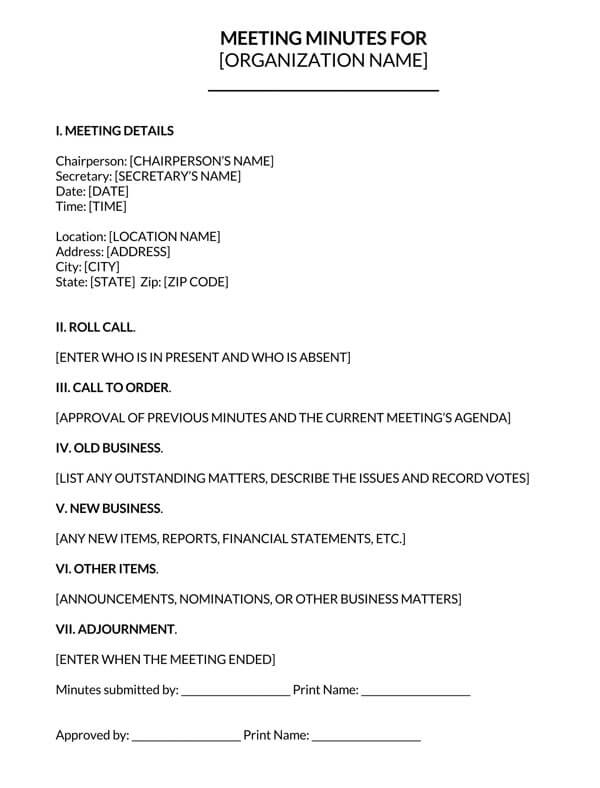
1 Page Meeting Minutes Template
One-page meeting minutes are basic meeting minutes templates that are one page long and outline general components of minutes.
Download: Microsoft Word (.docx)
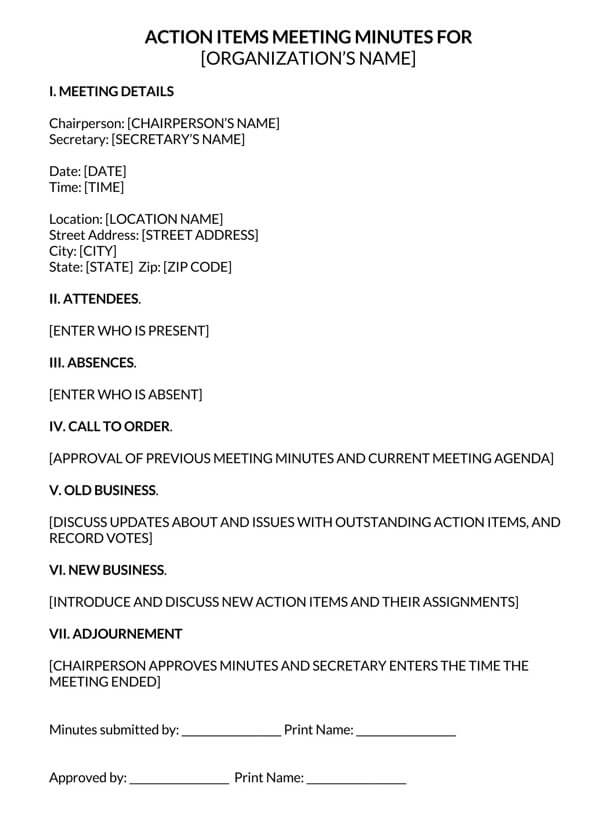
Action Items Meeting Minutes Template
Action meeting minutes templates are used to outline decisions and actions to be taken only.
Download: Microsoft Word (.docx)
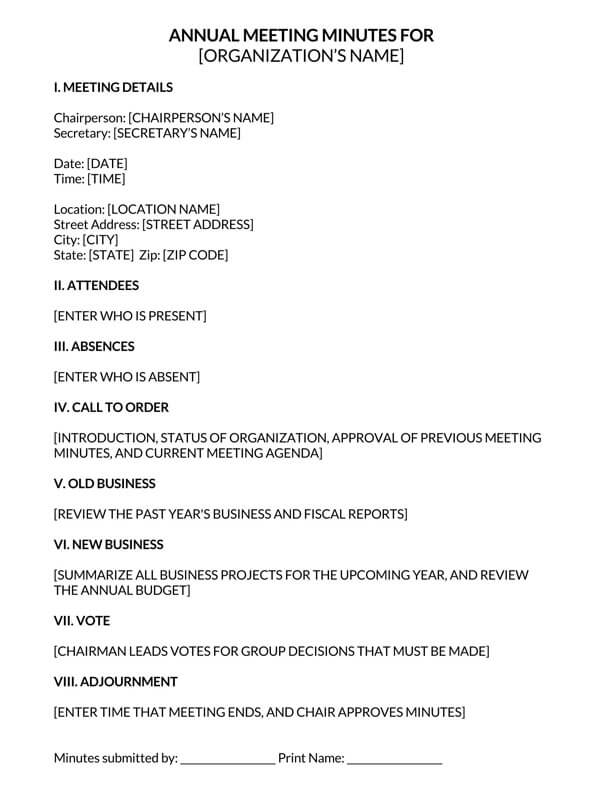
Annual Meeting Minutes Template
Annual minutes are recorded during annual meetings held annually like the Annual General meeting and focus on significant achievements and shortcomings for the year.
Download: Microsoft Word (.docx)
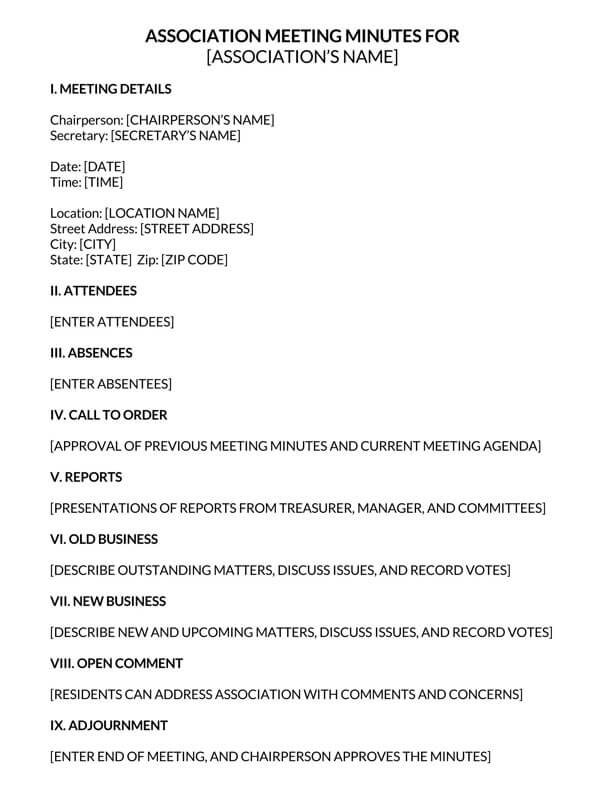
Association Meeting Minutes Template
An association meeting minutes are recorded in a meeting that all members of an association hold.
Download: Microsoft Word (.docx)
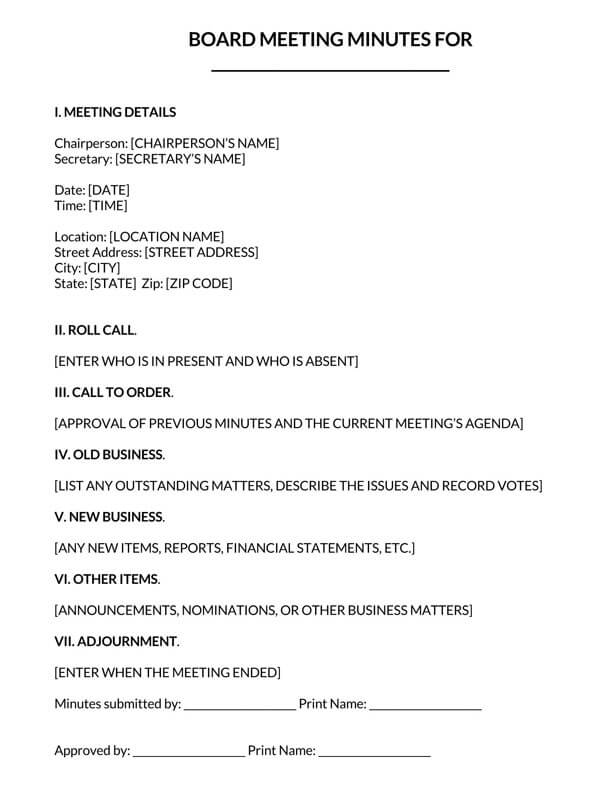
Board Meeting Minutes Template
A board meeting is held by the board of directors of a company or organization, and guests can also be in attendance.
Download: Microsoft Word (.docx)
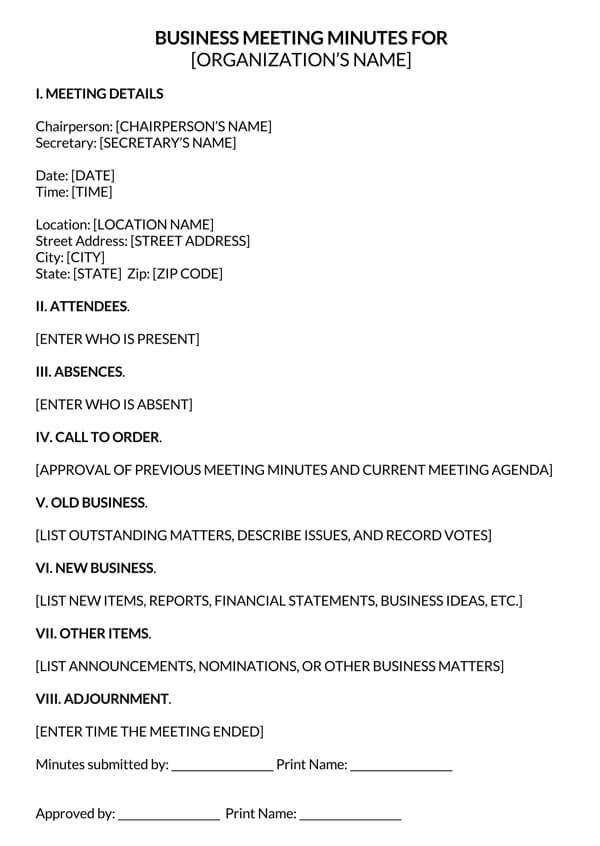
Business Meeting Minutes Template
A business meeting is held to discuss or make decisions associated with an organization’s objectives and operations.
Download: Microsoft Word (.docx)
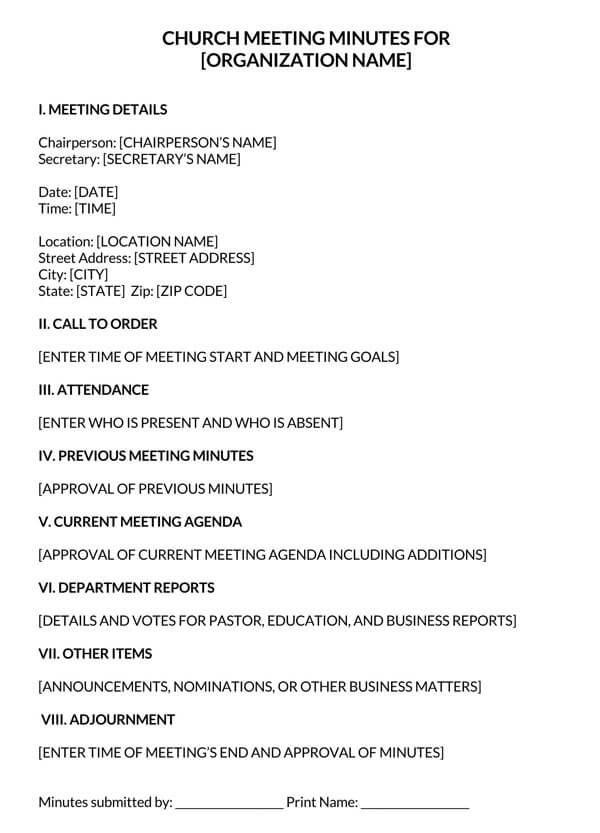
Church Meeting Minutes Template
A church meeting is ordinarily held by senior or church leaders to discuss programs and make critical decisions related to the church.
Download: Microsoft Word (.docx)
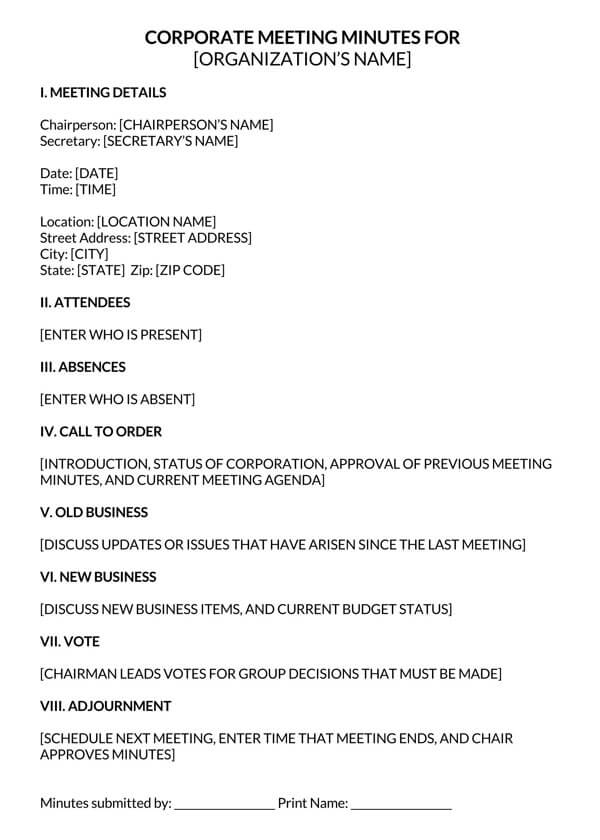
Corporate Meeting Minutes Template
A corporate meeting is a formal meeting held between members of a team to review their operations, goals and strategize on how to move forward.
Download: Microsoft Word (.docx)
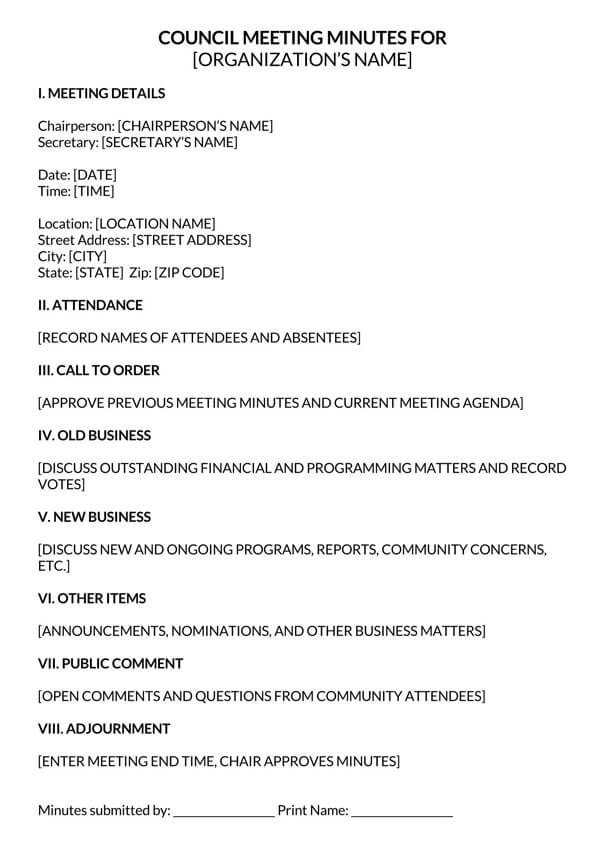
Council Meeting Minutes Template
Council members hold a council meeting to make council decisions.
Download: Microsoft Word (.docx)
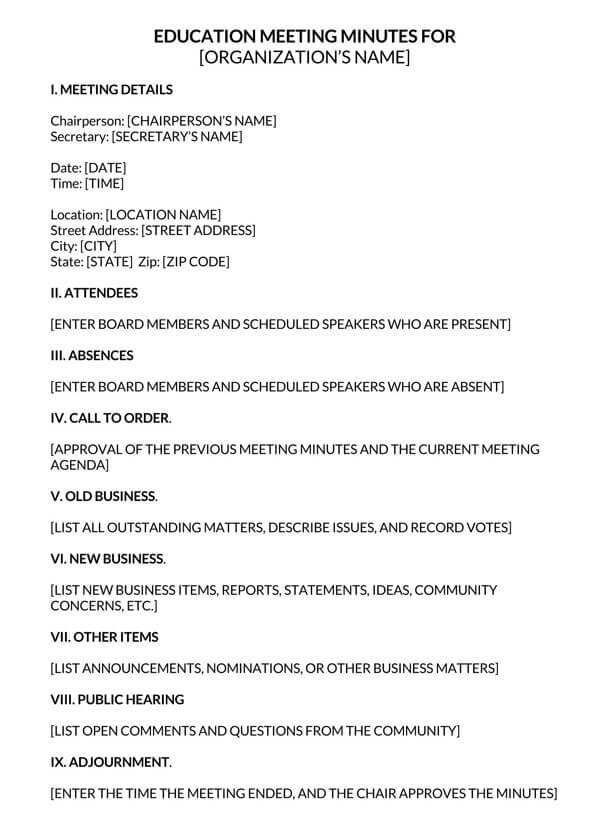
Education Meeting Minutes Template
Stakeholders in the education sector hold education meetings to make decisions on crucial issues related to education within a region.
Download: Microsoft Word (.docx)
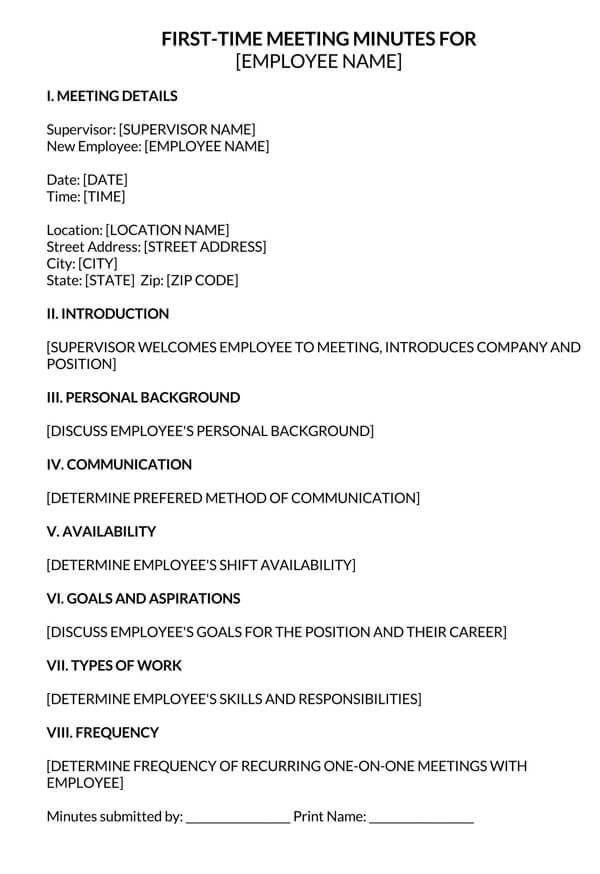
First-Time Meeting Minutes Template
Meetings held for the first time require meeting minutes to be recorded, which form a reference point for future meetings.
Download: Microsoft Word (.docx)
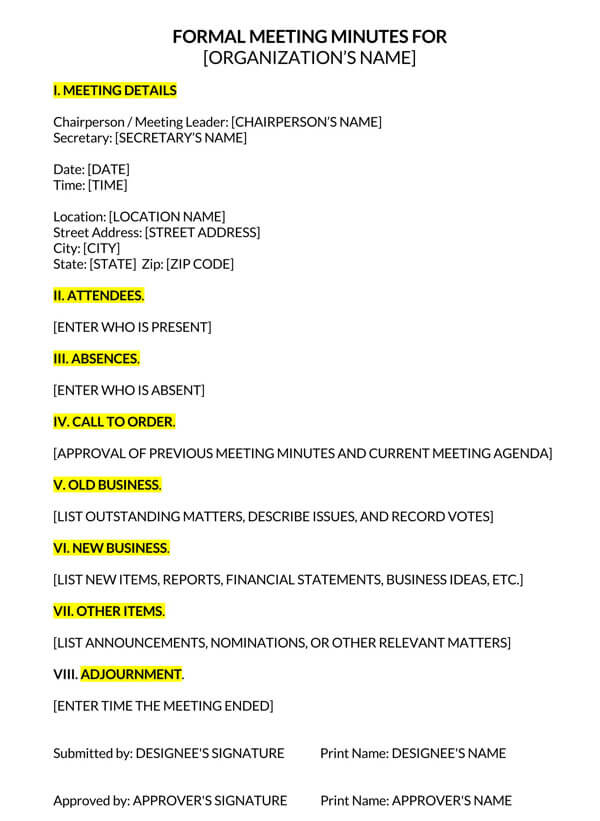
Formal Meeting Minutes Template
A formal meeting is held with predetermined topics of discussion and objectives. Formal notices and the plan are issued to participants before the meeting.
Download: Microsoft Word (.docx)
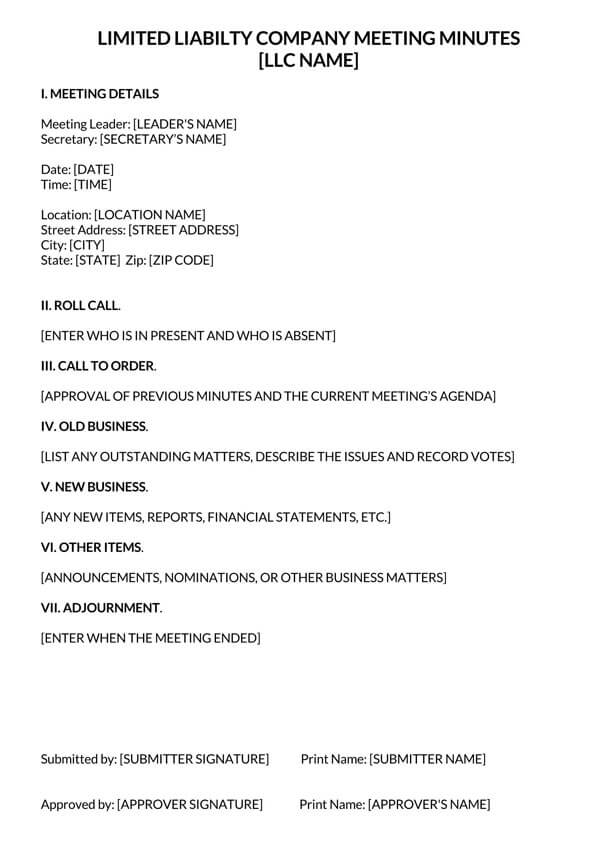
LLC Meeting Minutes Template
An LLC meeting is held within a limited liability company.
Download: Microsoft Word (.docx)
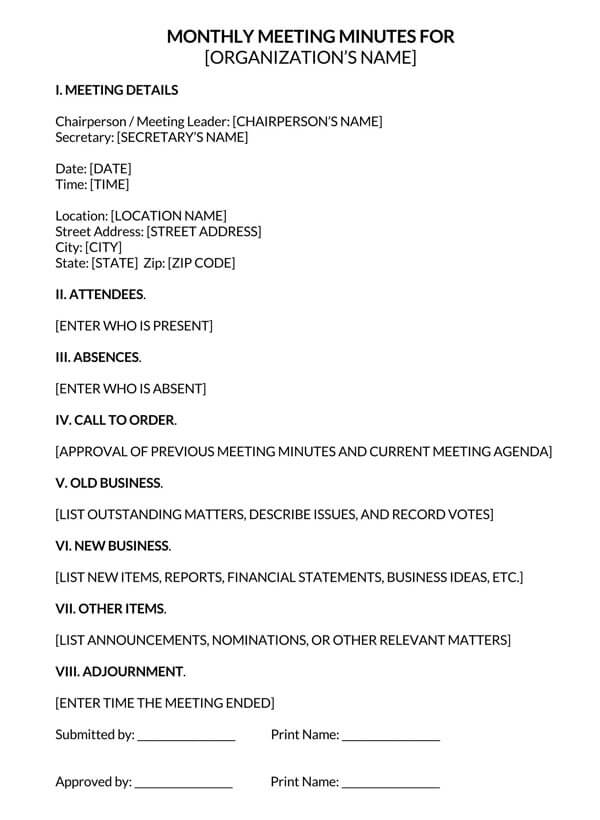
Monthly Meeting Minutes Template
Most organizations have monthly meetings, which result in monthly meeting minutes.
Download: Microsoft Word (.docx)
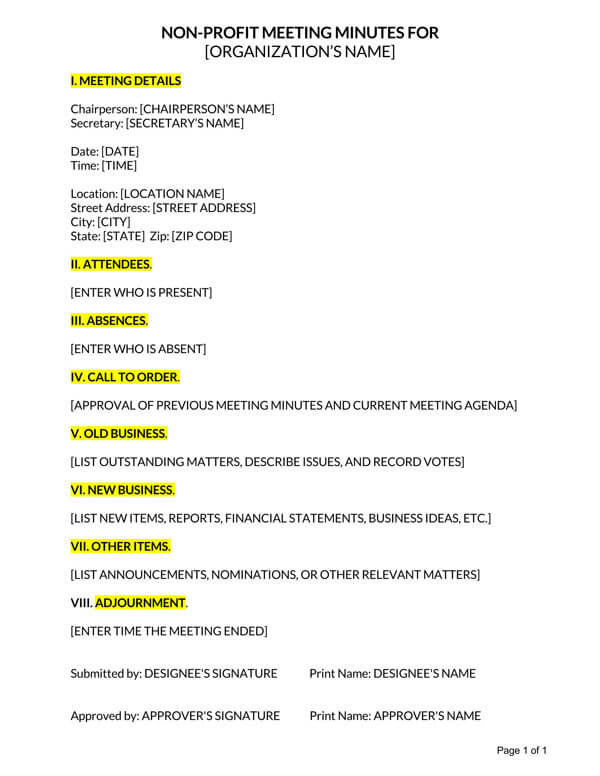
Non-Profit Meeting Minutes Template
Non-profit organizations also hold meetings to discuss important issues where minutes must be recorded for reference and documentation.
Download: Microsoft Word (.docx)
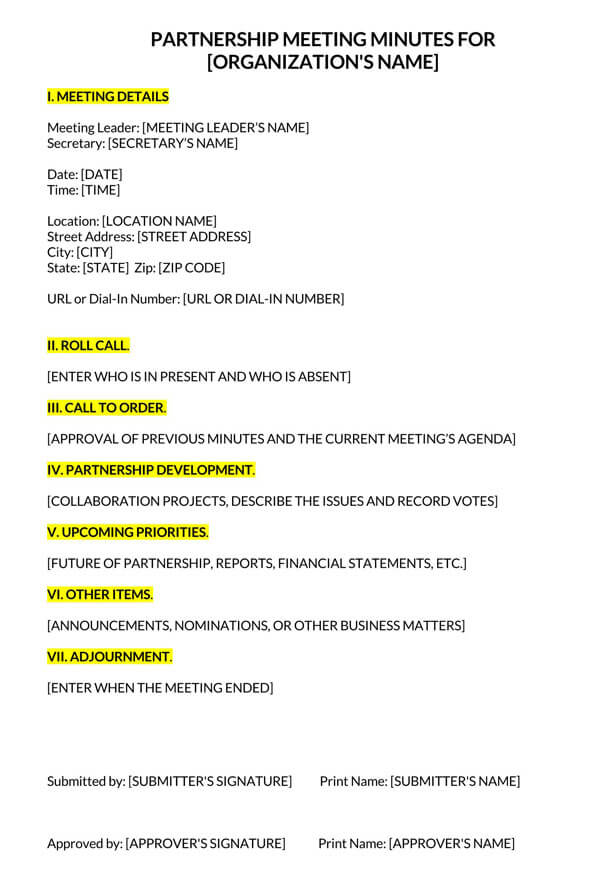
Partnership Meeting Minutes Template
Companies or organizations that donate then often become a partner to achieve different objectives. Meetings held between the two or more partners result in partnership meeting minutes.
Download: Microsoft Word (.docx)
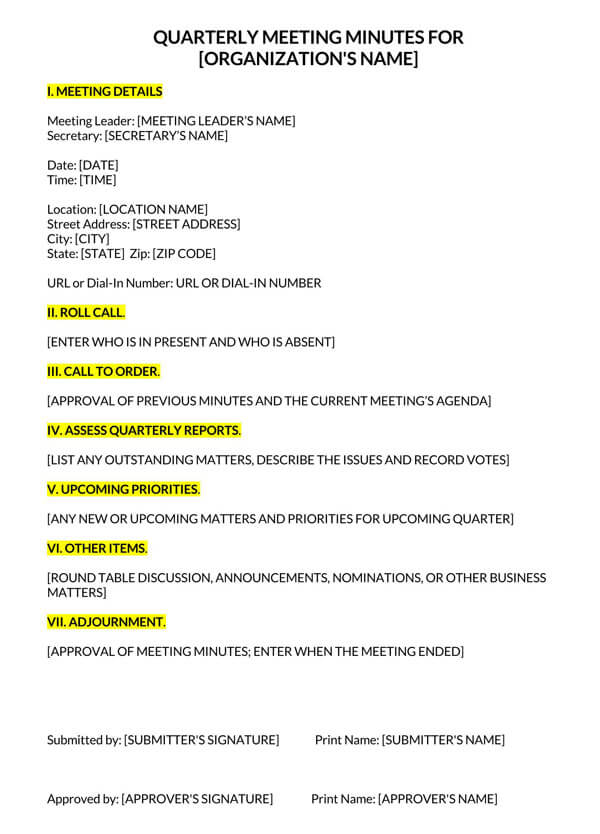
Quarterly Meeting Minutes Template
Some organizations will often hold quarterly meetings to determine revenue sales and carry out self-assessments. Therefore, meetings held quarterly must have their minutes recorded.
Download: Microsoft Word (.docx)
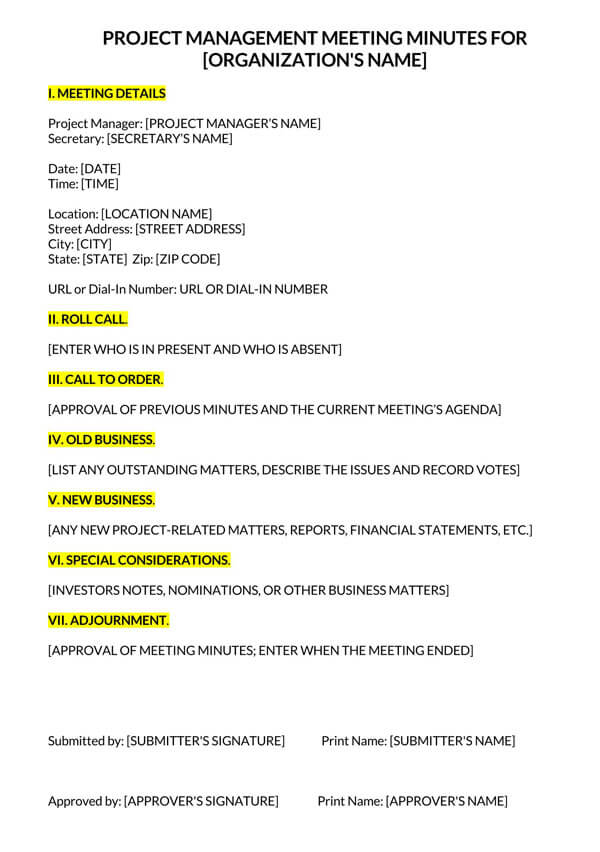
Project Management Meeting Minutes Template
Project managers have to host different meetings to review progress and update investors on the same. Such meetings have to have their minutes recorded.
Download: Microsoft Word (.docx)
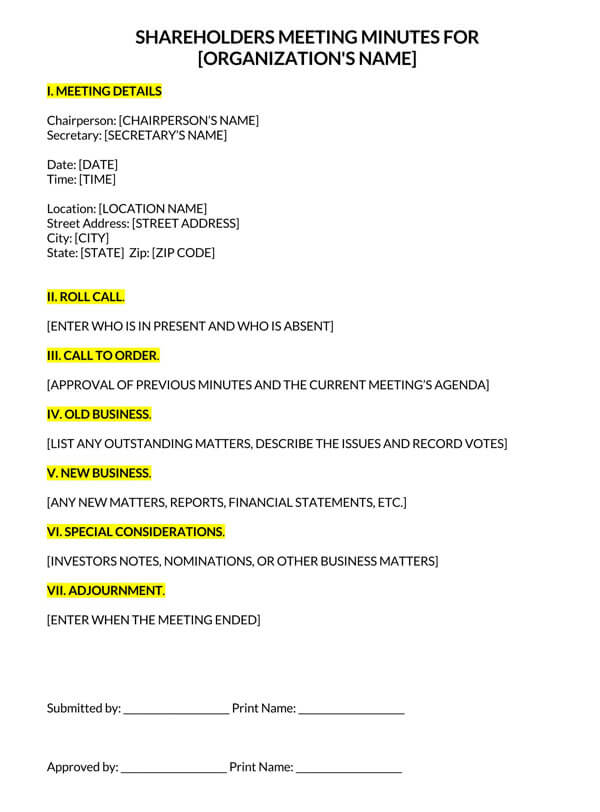
Shareholders Meeting Minutes Template
A shareholder meeting is a formal meeting between shareholders where profits and losses are discussed.
Download: Microsoft Word (.docx)
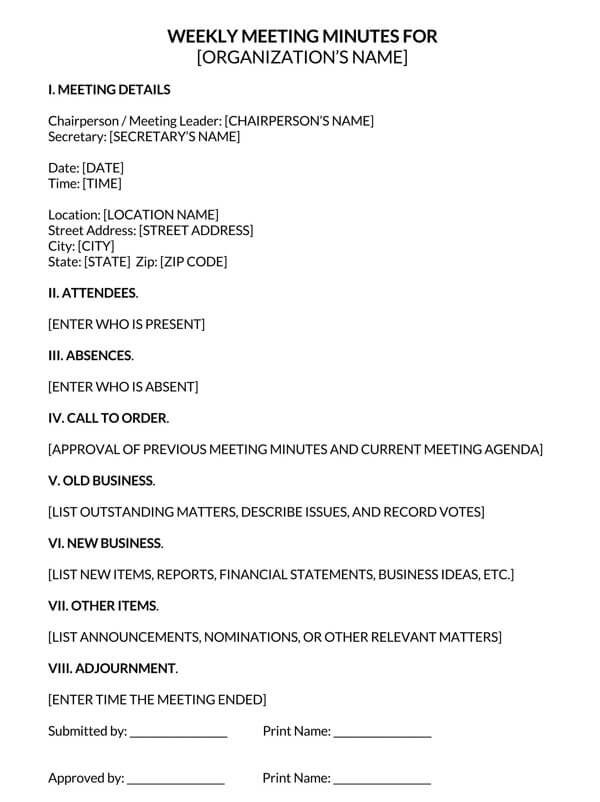
Weekly Meeting Minutes Template
Weekly meetings are shared among teams to review the progress of operations.
Download: Microsoft Word (.docx)
Purpose of the Meeting Minutes
The primary purpose of minutes is to provide an accurate written record of things that transpired during a meeting. As a result, the minutes can be later used for reference and communicate what transpired during the meeting to those absent and stakeholders. Having a tangible reference is important when the outcome of the meeting influences projects in an organisation and reminds participants of out-of-meeting responsibilities designated to them during the meeting.
Minutes are vital in conducting an orderly and successful meeting because they note down important points raised, decisions made through motions and votes, the next steps planned, and tasks (action items) assigned to different individuals. In addition, having this information written down is an efficient way of avoiding misunderstandings due to participants having different recollections of things said or done.
What is Included in Meeting Minutes
The contents of meeting minutes will depend on the type of meeting and the requirements of the organisation.
However, the common elements found in most meeting minutes templates are:
- Meeting description: Basic details such as the name of the group meeting, place, date, and time.
- List of the meeting participants: The names of everyone in attendance should be provided and those who are unable to attend. The list of attendees identifies people who made the decisions during the meeting. The person who will write down the minutes should also be identified.
- Meeting purpose: The main objective of the meeting should be outlined. The main objective provides a direction of the meeting and an overview of the contents of the minutes.
- Acceptance of amendments: Any changes made to meetings from the previous meeting should be noted in the minutes. If they were accepted after being read out, they should be declared.
- Agenda items: Well-written meeting minutes will typically have all the agenda items discussed during the meeting.
- Decisions are made and actions are taken: Any decisions that have been made in the meeting ought to be stated as they are crucial in the overall main objective.
EXAMPLE
If motions were proposed and voting was conducted, the outcomes should be stated.
In addition, action items of the meeting should be stated as well as the participants who executed the tasks.
- The date and place of the next scheduled meeting: The follow-up meeting should be scheduled at the end of the meeting and the dates and times noted down in the minutes.
- The documents to be attached to the meeting report: Any documents attached to the meeting report should be stated in the meeting minutes. Common documents include presentations, reports, or any other documentation.
How to Create a Meeting Minutes Template
Using a template for taking meeting minutes lessens the workload involved in preparing minutes. Since minutes are not word-for-word records of the meeting, using a template that contains all the fundamental categories will often be sufficient and just as effective.
This article will offer a step-by-step guide on using a standard meeting minute template that contains essential components when writing minutes. Effective writing of minutes will usually start before and during the meeting when note-taking. First, create a meeting minutes outline.
This is then followed by the writing process immediately after the meeting as follows:
Add title of the meeting
Firstly, write down the title of the meeting as the first item on the minutes’ template.
EXAMPLE
The title can be “Staff Meeting for the month of July,” “PTA Meeting,” etc.
Note down date/time and venue
Next, supply the date, time, and venue where the meeting was held. Finally, consult the outline first created during the meeting to ensure the specifics are accurately captured.
Note names of participants
Follow up the meeting description with a list of all the participants of the meeting (both absent and present). Also, state the person tasked with recording the minutes.
Add meeting’s agenda and topics discussed
One should then supply the meeting’s agenda and topics of discussion on the template. Finally, consult the minutes’ outline and the agenda to ensure consistent wording of topics to avoid misinterpretation.
Outline decisions made and by whom
All the decisions that were made during the meeting should then be outlined in the meeting minutes template. This should also be accompanied by the identification of the participants who made the stipulated decisions. Note that only vital points should be written down.
State motions/vote count
Next, write down any motions put forward during the meeting for attendees to vote. The minutes should note how many attendees’ voted “yes” and “no” (vote count).
Add action items
Tasks created during the meeting that should be completed later should then be noted in the meeting minutes template. This should be accompanied by the names of the participants assigned the said tasks.
Add relevant touched-upon ideas
Once the action items have been listed, write down any new discussion topics, not in the plan but were brought up during the meeting. This should include even topics that were not thoroughly discussed but were relevant to the meeting or the next meeting.
Supply date /time for next meeting minutes
Finally, supply the date, time, and venue for the meeting in the template. This is ordinarily the last essential item on the template.
Meeting Minutes Template
Following is a template provided for your better understanding:
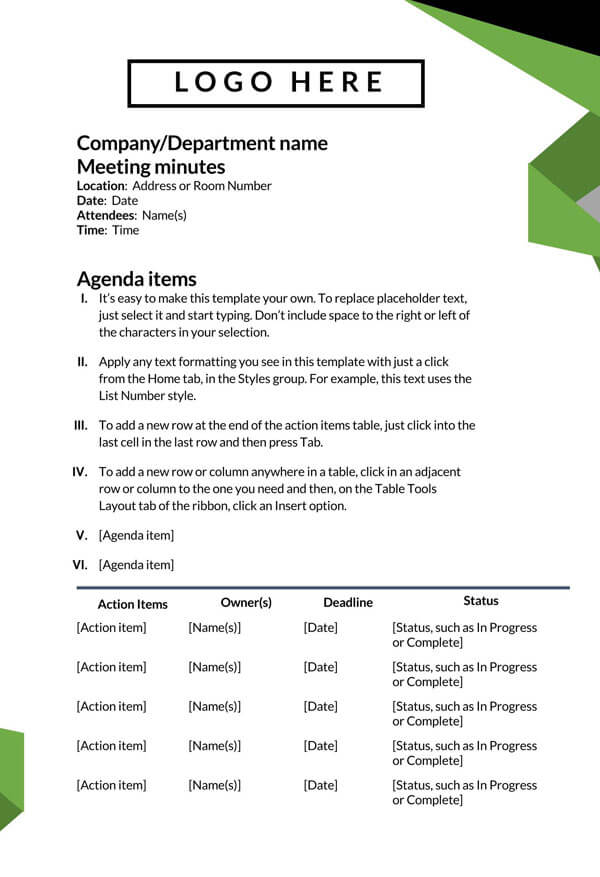
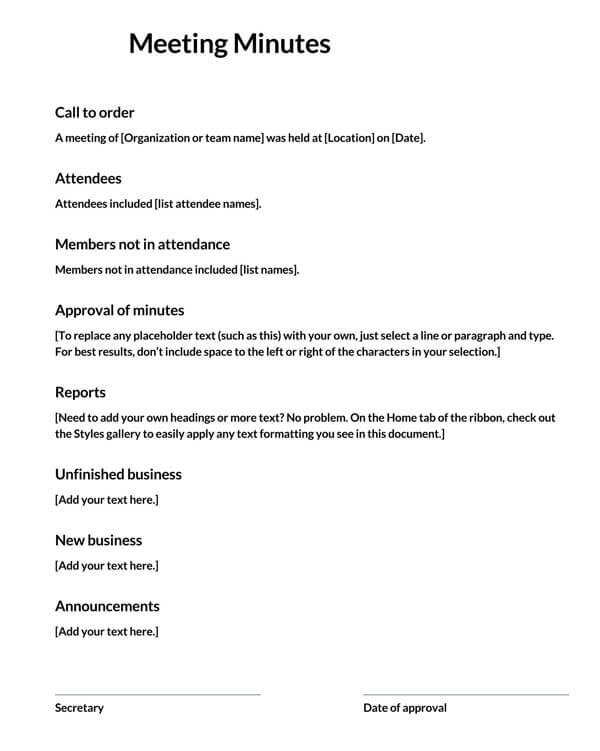
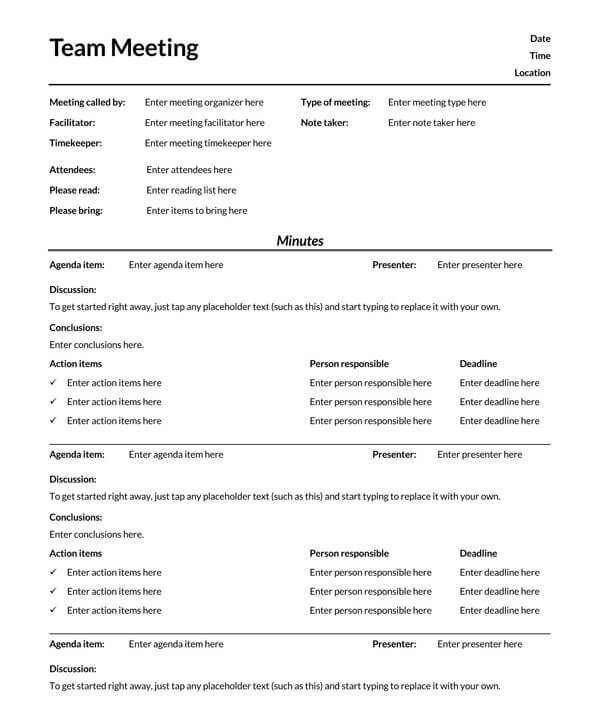
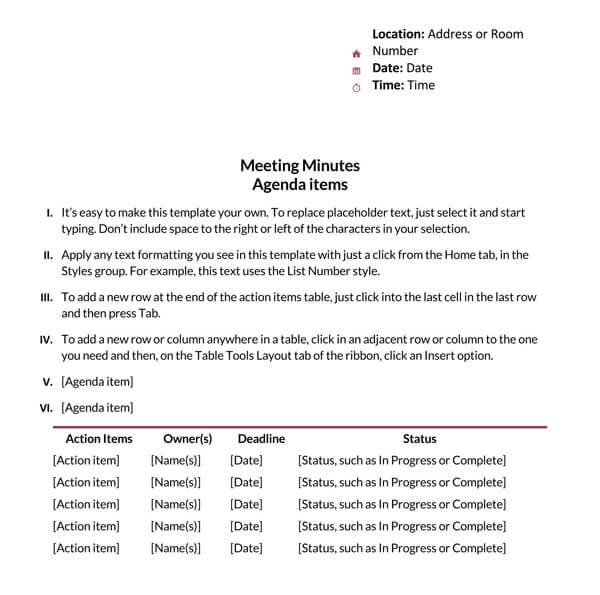
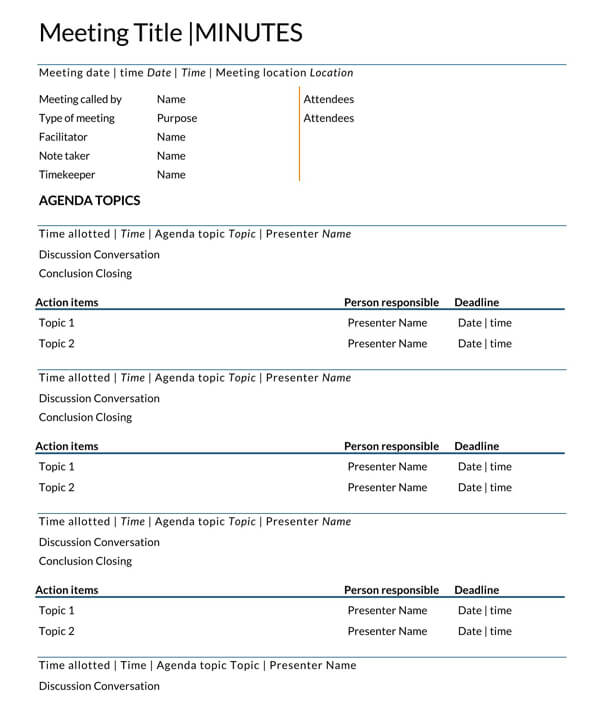
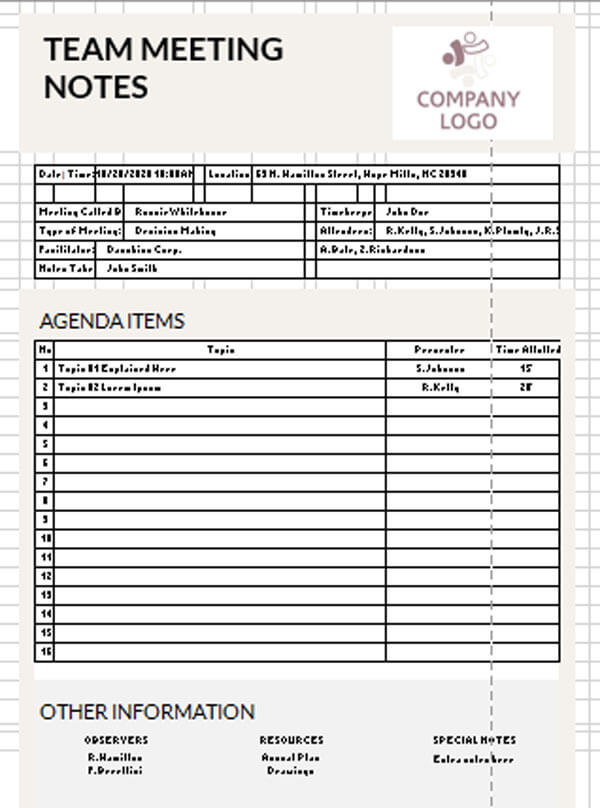
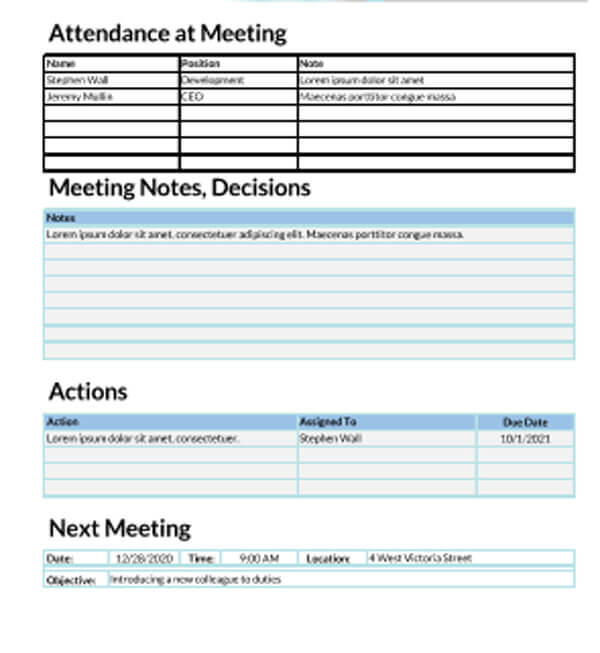
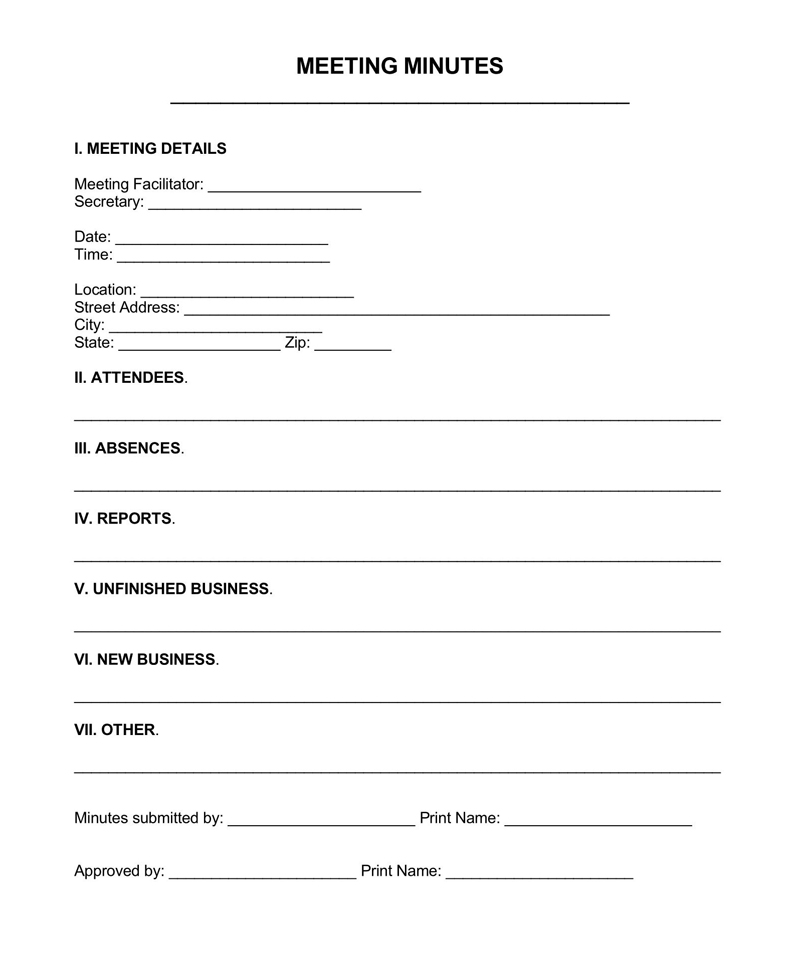
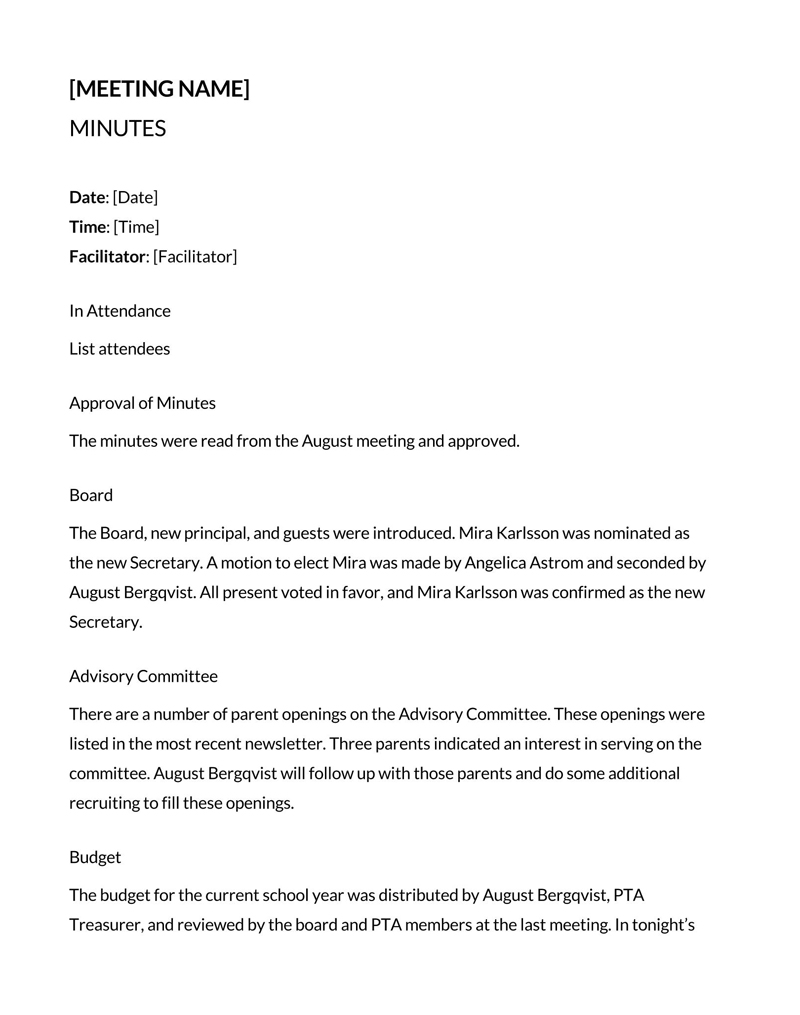
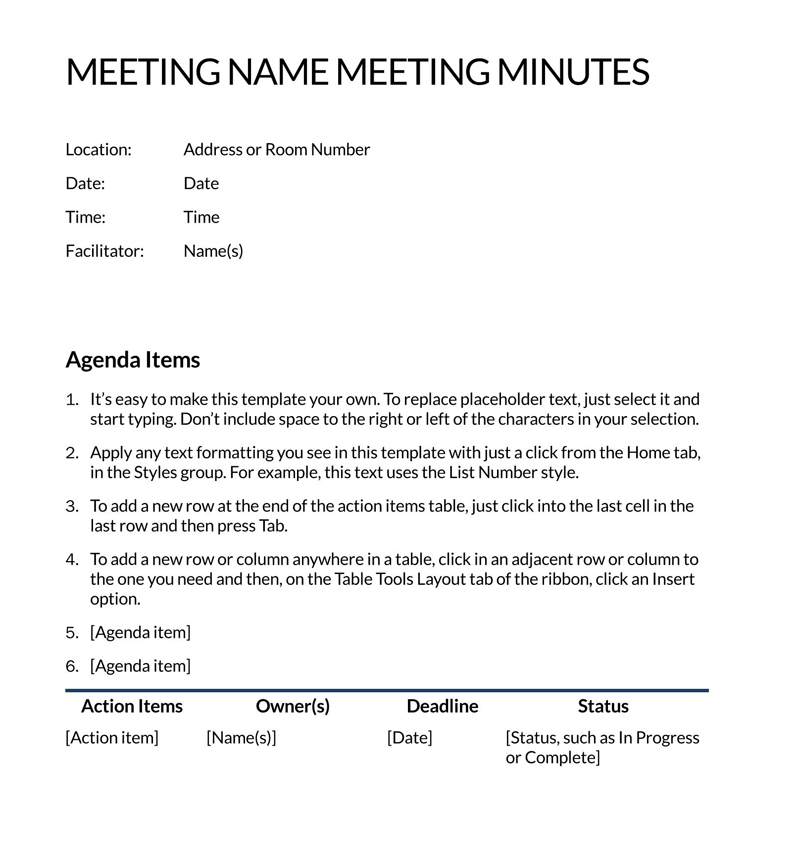
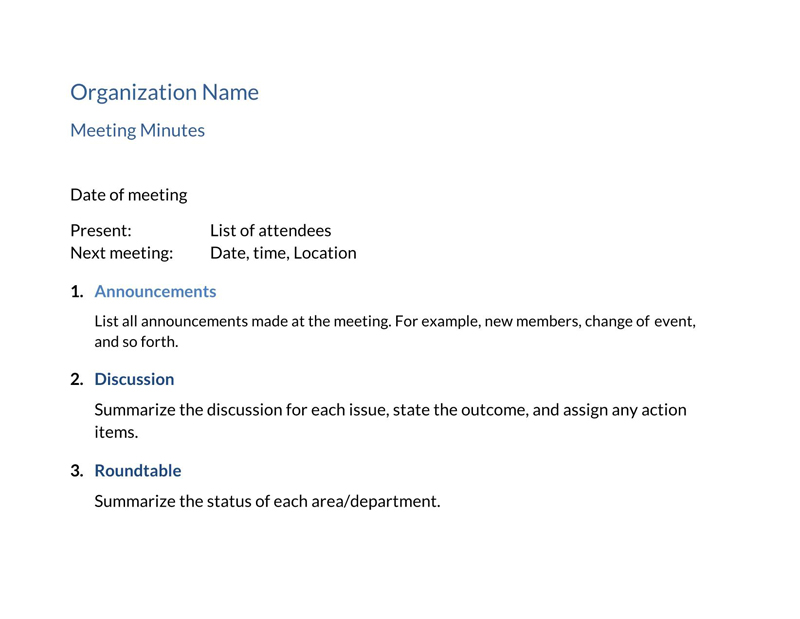
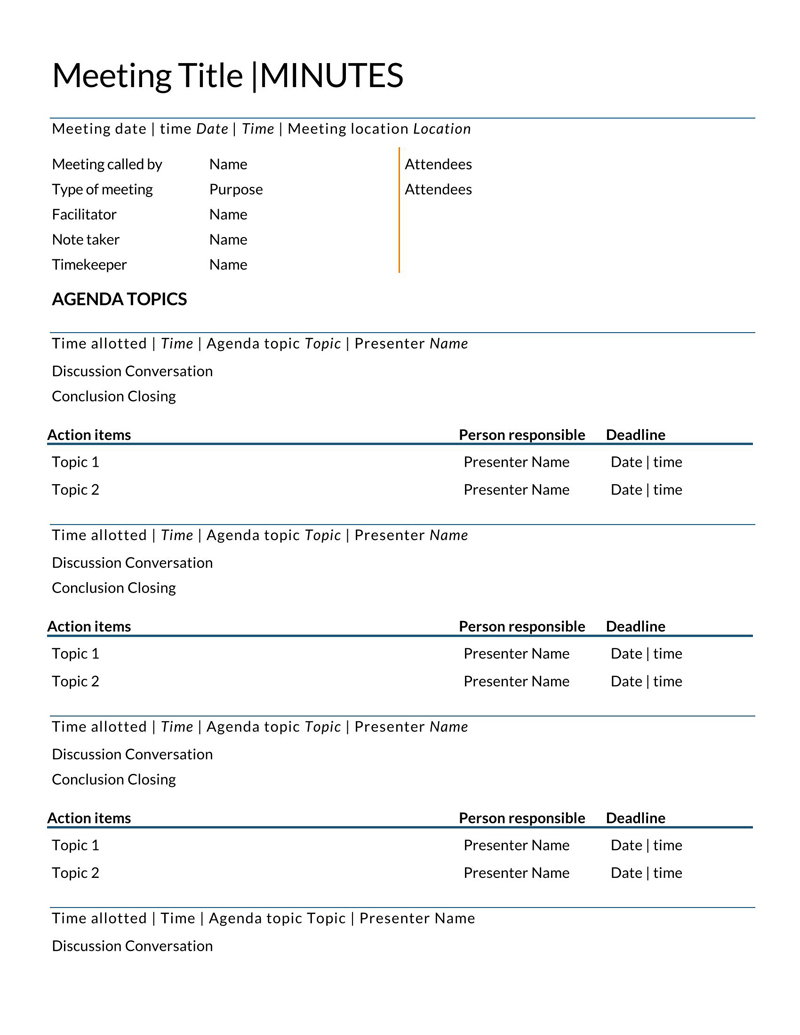
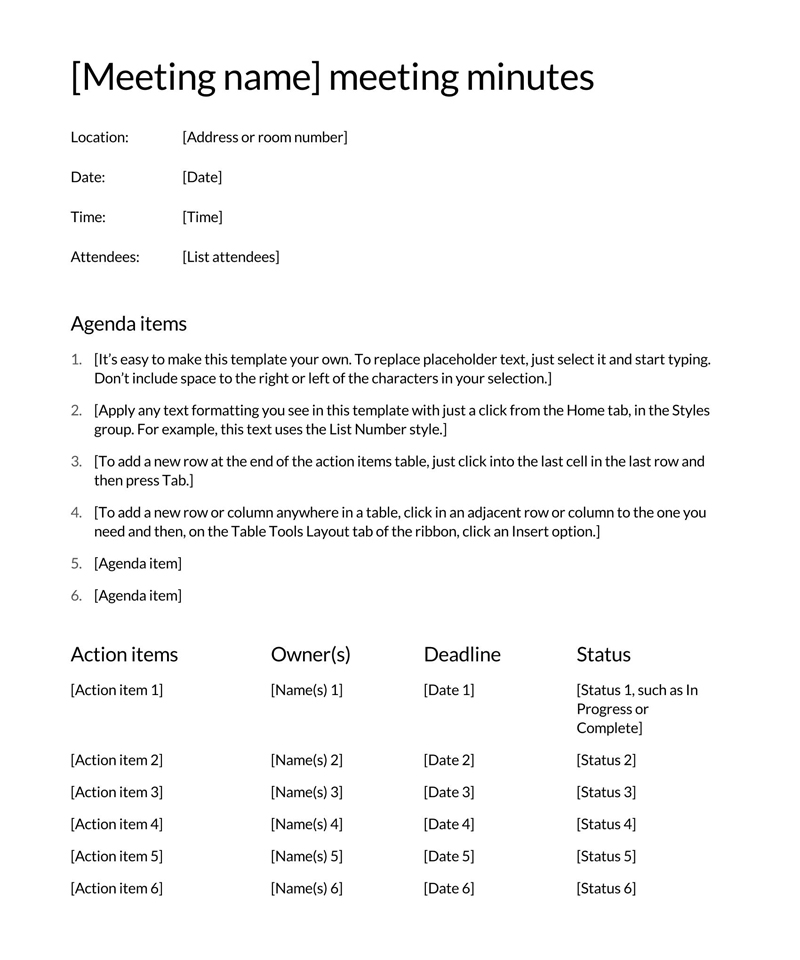
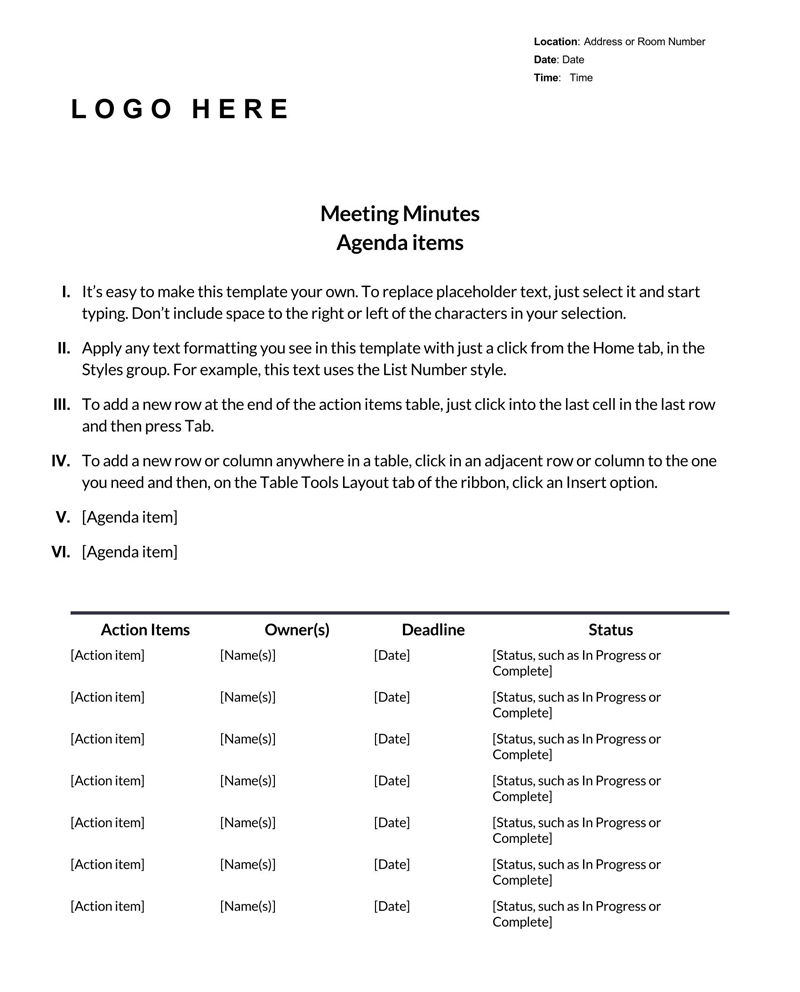
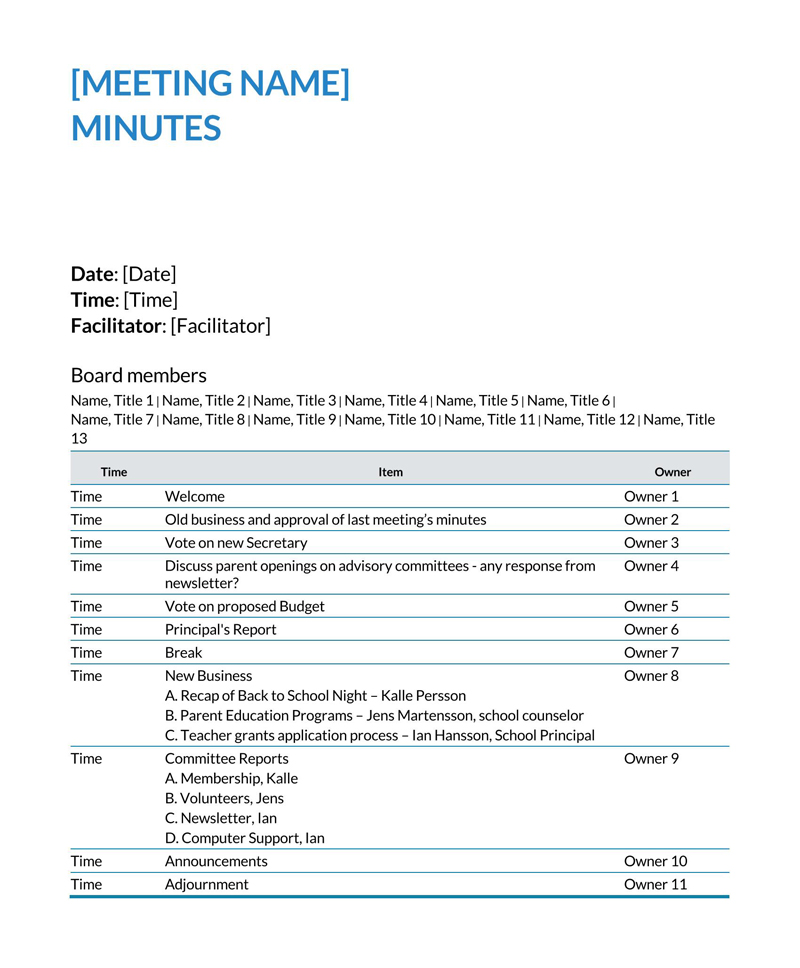
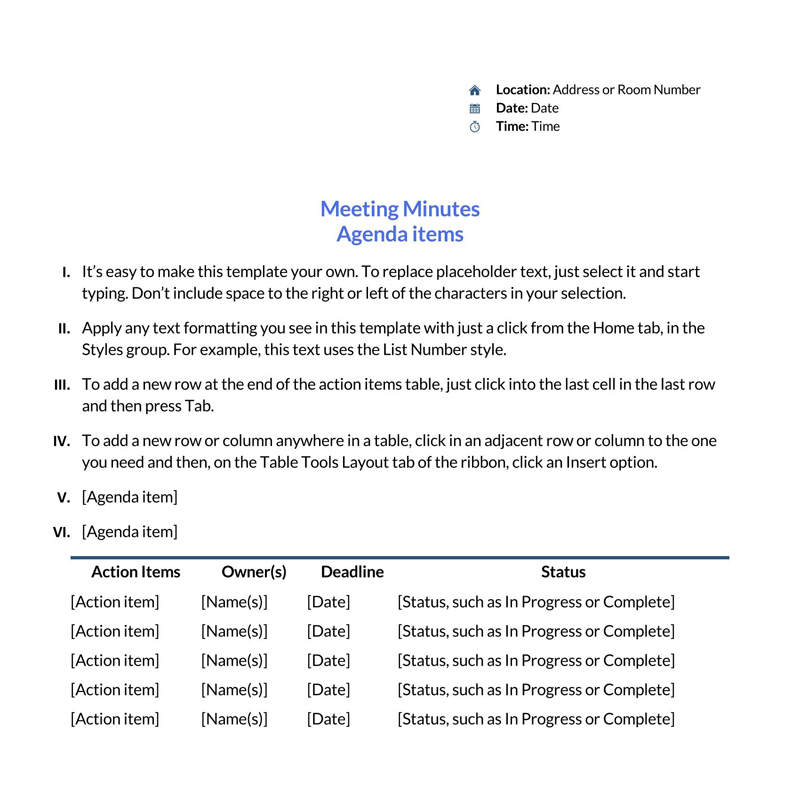
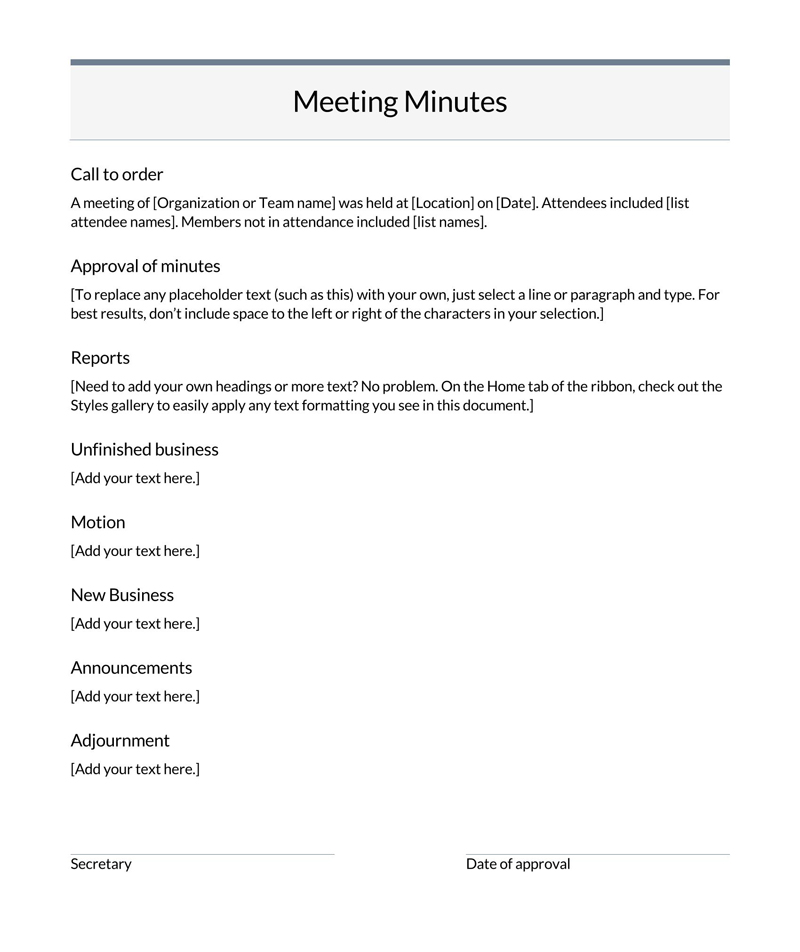
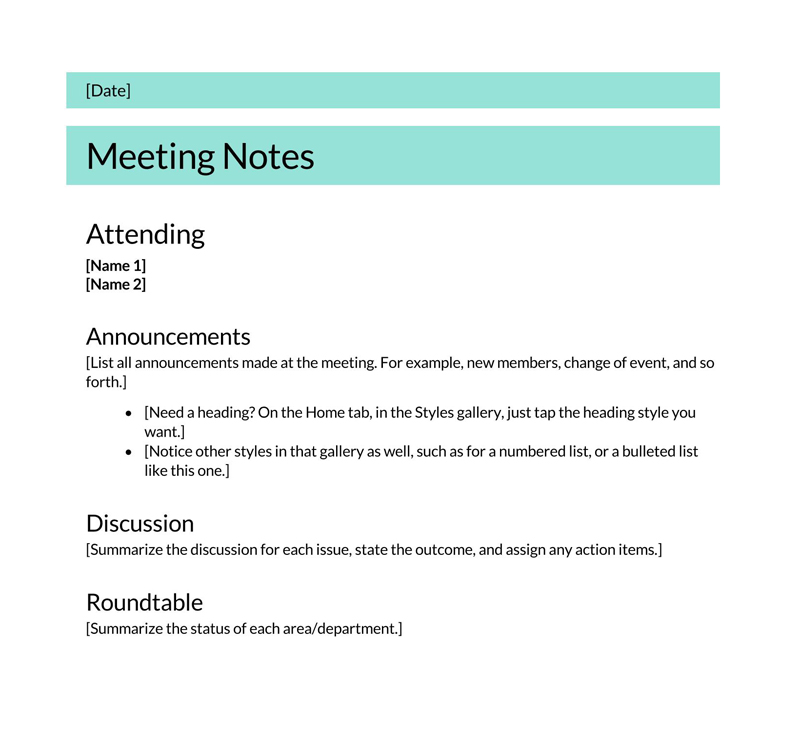
Taking Meeting Minutes Effectively
As someone taking minutes in a meeting, one can observe things to ensure the meeting’s minutes effectively serve their intended purpose.
Some of the dos and don’ts include.
Do’s
They include:
- Take minutes in real-time and make notes: It is recommended that minutes must be taken during the meeting. This ensures the meeting minutes template is updated as the meeting goes on and information is captured as accurately as possible. Notes should also be taken for each topic discussed so that details not written down but ought to be in the minutes can be added later.
- Review outline: The meeting agenda creates the meeting minutes outline. Ensure to first go through it to determine what information is expected to appear in the minutes.
- Be precise: Precision or specificity is critical when writing minutes. One should be able to write down what is happening and or was said without contradiction. Remember, different stakeholders use minutes in an organisation, and therefore leaving no room for misinterpretation is key in ensuring effective communication.
- Provide enough context: As much as meeting minutes are meant to be a summary of the meeting, there should be enough context that can be referenced in the future and clarify what transpired during the meeting.
- Just note the facts/sufficient detail: The meeting minutes should be factual. Note down things as they occurred or as presented. The minutes should not have personal opinions or implied statements.
- Edit to ensure clarity: Once the meeting minutes template has been completed, one should review it to correct any typos or spelling mistakes made during the writing process. Also, ensure that the proper format was used. Formal meetings require professionally written minutes, and therefore thorough editing might be needed than for informal meetings.
Don’ts
The things to avoid are as follows:
- Do not record everything: Meeting minutes summarise what transpired during a meeting and do not have to be too detailed.
- Do not include personal thoughts and observations: Avoid including personal perceptions in meeting minutes. Content of the minutes should be “as it is.” Personal thoughts should be recorded separately.
- Do not repeat the information: Avoid repetition. Information already noted in the minutes does not have to be repeated, but referencing can be done.
- Do not hand write the notes: It is recommended that minutes must be typed, which makes saving and sharing of the document more accessible, which is vital since minutes are kept for future use.
Advanced Meeting Minutes Tips
Since meetings are characterised by a flurry of multiple activities happening simultaneously, quick note taking is imperative to capture all relevant information.
The tips are given below go a long way in ensuring that this is achieved:
Create an outline
Creating an outline for the meeting minutes is important for note-takers as an outline act as a guide for note-takers on what is to be included in the minutes. In addition, by having an outline, one can record notes, decisions, and pertinent details under each item listed.
Check-off attendees
Recording attendance is recommended at the beginning of the meeting.
One can use the following methods:
- Check them off at the door as they arrive
- Provide an attendance list to be circulated as the meeting goes on
- Request attendees to introduce themselves before the start of the meeting
Record decisions/notes
Decisions and notes should be recorded as they occur. This way, one won’t have to rely on their memory when noting down information.
Ask for clarification
Note-takers are advised to seek clarification in instances where statements or points are unclear.
Use initials instead of the full name
To speed up the writing process, one should opt to use initials when referring to participants. Writing their full names can be time-consuming and might result in missing important information. When writing meeting minutes, try to save as much time as possible to keep up with the ongoings of the meeting.
Use acronyms where applicable
Standard acronyms can be used in minutes. Acronyms, just like initials, help in saving time.
Frequently Asked Questions
The minutes of a meeting are prepared by a meeting participant appointed by the team. In some cases, this is usually the organization’s secretary, but this will vary from one meeting to the other.
Meeting minutes can be abbreviated as MoM (Minutes of Meeting) or MM (Meeting Minutes).




